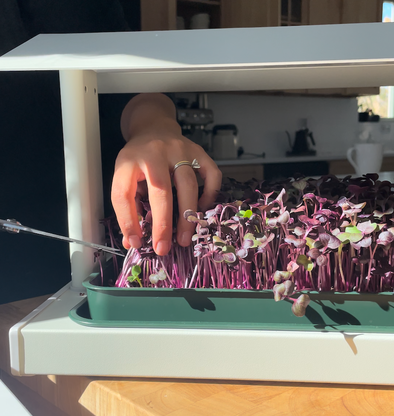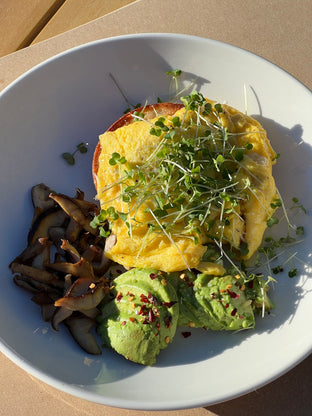
An important distinction all new growers should be able to make is telling the difference between root hairs and mold.
Root hairs are a perfectly normal biological function of sprouting seeds. The reason this phenomenon might be unfamiliar to most is simply because seeds are most typically planted under the soil in conventional gardening. These root hairs are still very much growing, but they are hidden from sight, working away underground. With microgreens on the other hand, seeds are sown on the top layer of soil. This is what enables growers to harvest so early, because seeds do not spend the time pushing up through a bunch of earth. Functionally, root hairs are the seed’s way of sending out feelers for sources of water. They provide a directional sense for root growth, so seeds do not waste energy growing the wrong way.
From first glance, root hairs appear as fuzzy white strands branching out from the germinated seed root known as the radical. They are most commonly encountered the first time you check under the germination lid, or 1 – 2 days after sowing. Their hairy composition is what usually causes growers to mistake what’s happening in their tray for mold.
The easiest way to tell the difference between root hairs and mold is examining where exactly things are happening. Root hairs grow directly from sprouted root and are concentrated around the established root structure. In comparison, mold typically appears as a spiderweb-like substance that grows on top of the seeds. Biologically, mold is nature’s way of decomposing organic material. It’s more common in larger seed varieties (sunflower and pea shoots) because mold likes to break down leftover seed husks after germination.
MOLD — WHAT CAUSES IT & HOW TO MITIGATE
Mold tends to like warm, humid, and stagnant environments, so addressing these issues directly can provide the best line of defense against it. Choose a location for your Fieldhouse where there is plenty of airflow and circulation. This can be found in high traffic places like the kitchen counter, near vents, windows or in rooms with ceiling fans.
Maintaining the right growing temperature is also crucial in deterring mold. Our research shows this optimal zone is between 60° and 75° F (15.5° - 23° C).
For those larger seed varieties that require pre-soaking (pea shoots and sunflowers) thoroughly rinse your seeds before soaking in clean water. You can also preemptively address bacteria by soaking seeds in a mixture of 1 Tbsp 3% food grade hydrogen peroxide or white vinegar and 1 cup of water for 5 minutes max. Strain and rinse the seeds well and then pre-soak in clean water for 4 - 8 hours.




















